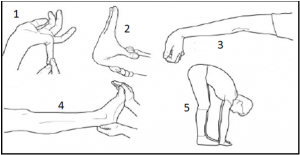Last week Okanagan Peak Performance Inc hosted a seminar for the gymnastics community. The title was The Most Important Ability for Gymnasts - What it is and how to improve it. Below is a brief recap of the seminar.Probably about 15 years ago I did a clinic for Pacific Sport on speed and agility. This was a short clinic for a number of athletes in their teens from a variety of sports. One of the athletes, Jordy, really stood out during the clinic and later I began coaching her and she eventually came to work for us.That was the first time I had worked with a gymnast. And a few things stood out right away. Gymnasts are really hard working. Gymnasts have really high relative strength. In other words their strength per body mass is excellent. Gymnasts tend to be hyper-mobile. Gymnasts tend to injured quite often.It was this last feature of gymnasts that was the inspiration for this presentation.You see, gymnasts tend to get injured. A lot.It's especially high when you consider gymnastics is a non-contact/non-collision sport it's unfortunate to see the high injury rate among gymnasts. You might expect to see injured athletes in football, rugby or hockey where an opponent is trying to run through you.In terms of gymnastics injuries, these are more commonly chronic rather than acute. This means the injury is the result of a pattern over time. Acute injuries can be traced back to a specific episode such as a fall or awkward landing.With male gymnasts the hands and wrists are the more commonly injured joints. This can the result of high speeds and loads being borne by the hands and wrists in an awkward position. Sometimes landings or transitions are one hand at a time doubling the force on these joints compared to when both...
